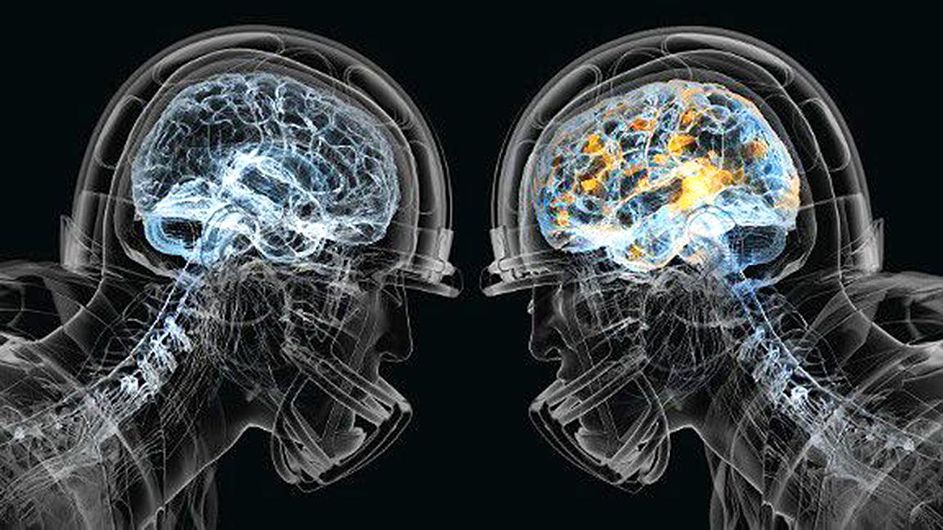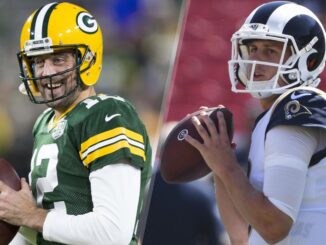
According to National Conference of State Legislatures (NCSL), “a traumatic brain injury is a disruption of the brain due to a bump, blow, jolt or penetrating head injury.” Although most of these injuries occur primarily from car accidents and blunt force trauma to the head, the link between football and brain injuries continues to rise. In a recent study, researchers discovered that out of the 111 brains analyzed from deceased NFL players, 110 of them tested positive for chronic traumatic encephalopathy (CTE), a brain disorder associated with repeated hits to the head over a period of time.
This means that professional athletes who play in the NFL are at greater risk because they’re more susceptible to concussions and other brain-related injuries. Today’s NFL is nothing like it was two decades ago. In other words, today’s players, like Eddie Lacy, are bigger, stronger, faster, and in better shape than ever before. They have bodies of steel, and every muscle in their body has been fine-tuned for maximum performance by coaches and training staff members. But no matter how many hours athletics spend training on the football field, there are some parts of the body that will never be able to withstand constant twist (joints), collisions (bones), and hits above the neck (brain).
Within the past year, the NFL has finally acknowledged for the first time the link between football and CTE after denying it for years. Now they are getting hit with countless lawsuits from former players who filed for personal injury lawsuit and compensation claims.
So what happens now if a player sustains a brain injury that could be career-ending or life-threatening? What happens if they received this brain injury through no fault of their own? It can make things incredibly tough for them that’s for sure, but at least with the help of lawyers like the best personal injury lawyers in Atlanta, they can receive the compensation that they deserve. However, although getting compensation can help with some things, it doesn’t help the people who get a brain injury that ends their career – so what can they do?
Before diving into the concussion protocol methods, it’s important to address the myth circulating around the NFL when it comes to concussions. Many who work within the field related to these injuries, such as Michael Ronemus, a New York brain injury expert and attorney, will have heard a common belief that has been making the rounds for many years now, which is that after a player sustains a hit to the head, the brain will bounce around the skull for a few seconds, leaving bruises only on the outer surface – or gray matter – thanks to the protective gear athletes wear.
According to Ohio University, scientists and researchers have teamed up to prove this theory wrong. Yes, there is some movement within the skull, but the real damage, however, occurs deep within the brain – in the white matter. To put it in a different perspective, think of someone shaking Jell-O around in a bowl. When Jell-O is shaken repeatedly, for instance, it stretches apart. This is essentially what happens to the brain after taking a blow to the head – the wires that connect your brain to your body are left damaged.
After a player suffers a concussion, they must go through what’s called a “concussion protocol,” which involves a series of test and sideline evaluations – developed by the league’s head, neck and spine committee – to help determine if they’re able to continue playing. Since every head injury is different, each player must be treated individually. In most cases, however, the player either doesn’t know they’ve suffered a concussion or simply doesn’t report it to officials, which doesn’t help in the long run. This can make things complicated. Owen, Patterson, and Owen are experienced Lancaster, and Palmdale California personal injury attorneys with million dollar case results, and have likely seen such complicated cases before, but even so if this can be figured out earlier on it can help solve a lot of problems for people.
If a player does show signs of concussion symptoms and fails to pass the protocol exam, they will be removed from the game and evaluated by training officials in the locker room. If that same player continues to experience concussions, or takes a serious blow to the head – like Ricardo Lockette – throughout the season, they will be forced to retire from the NFL to prevent further damage to the brain.
Whether or not this will work, only time will tell. But concussion rehabilitation is the next frontier when it comes to learning how to treat these types of injuries among football players. In order for this method to work, however, medical officials need to have a better understanding of who can benefit from this treatment, and when it should be started. In addition to playing hard for big contracts, NFL players, as well as youth players, need to take into account their future playing career. It’s scary if you think about it, but it’s something that needs to be addressed. For many sportsmen, the only way to achieve justice after receiving such a big blow and possibly losing their dream job is to contact professionals like these personal injury attorneys jacksonville fl in a lawsuit, especially if their injury has been so severe to permanently damage their body.
Education is key for concussion prevention. That’s why wearing your protective gear and knowing how to use it is vital. Concussions in football are something that can’t be prevented, but taking steps towards being safer on the field can limit the number of head injuries players sustain.




